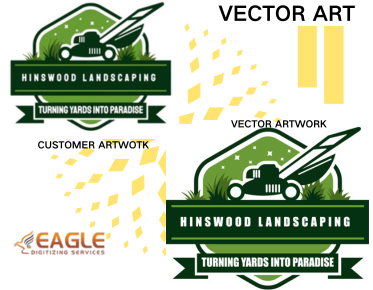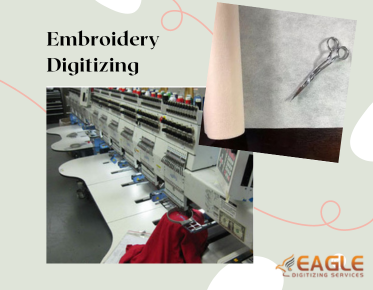Beginner's Guide: How to Operate a Yudu Screen Printing Machine
Screen printing is an art form that merges creativity with precision. The Yudu Screen Printing Machine makes this process accessible and fun for beginners and seasoned artists alike. This guide will take you through the steps of using your Yudu machine, from setup to creating your first print. Whether you're customizing t-shirts or crafting unique home decor, mastering the Yudu will open up a world of artistic possibilities. If this post piqued your curiosity and you wish to learn more about vector artwork conversion, feel free to reach out to us.
Getting to Know Your Yudu Screen Printing Machine
Unboxing Your Yudu: What’s Inside?
When you first unbox your Yudu Screen Printing Machine, you’ll find an array of components that might seem overwhelming. Inside the box, you’ll typically find the screen printing unit itself, screens, emulsion sheets, an exposure unit, squeegees, transparency films, and inks. Familiarize yourself with each part before diving into your first project.
Understanding the Key Components
The Yudu machine is composed of several crucial components. The screen holds your design, the squeegee spreads the ink, and the emulsion is a light-sensitive coating that helps transfer your design onto the screen. Understanding these elements will make the process smoother and more intuitive.
Preparing Your Workspace
Setting Up a Clean and Organized Area
A tidy workspace is essential for successful screen printing. Choose a well-ventilated area with ample light. Lay down some newspapers or a plastic sheet to catch any ink spills. Make sure your work surface is flat and stable to avoid any mishaps during printing.
Gathering Necessary Supplies
Before you begin the process, gather all the supplies you’ll need in one accessible place. This includes your Yudu machine, screens, emulsion, transparency films, inks, squeegees, and a water source for rinsing. Having everything within reach will save you time and keep the process flowing smoothly.
Choosing the Right Materials for Your Project
Selecting the Perfect Screen
Choosing the right screen is crucial. Screens come in various mesh sizes, which determine the level of detail your design will have. A higher mesh count is ideal for detailed designs, while a lower mesh count works well for bold, simple patterns.
Picking the Best Inks
The type of ink you use can greatly affect the outcome of your project. Water-based inks are beginner-friendly and easy to clean, while plastisol inks offer durability and vibrant colors. Make sure to choose inks that are compatible with your fabric or paper.
Prepping Your Design
Creating a Digital Design
Start by creating your design digitally. Software like Adobe Illustrator or CorelDRAW is great for this purpose. Ensure your design is in black and white since the Yudu machine relies on contrast to transfer the image onto the screen.
Using Yudu’s Online Resources
Yudu provides online resources and templates to help you get started. These resources can guide you through the process of creating a design, preparing it for printing, and troubleshooting any issues you might encounter.
Printing Your Design on Transparency Paper
Once your design is ready, print it onto transparency paper. This paper is essential for the exposure process, as it allows light to pass through and harden the emulsion around your design.
Preparing the Screen for Printing
Coating the Screen with Emulsion
Apply a thin, even layer of emulsion to your screen. The emulsion is light-sensitive, so this step should be done in a dimly lit room. Use the squeegee to spread the emulsion smoothly across the screen.
Drying the Emulsion Properly
Let the emulsion-coated screen dry completely in a dark room. You can use a fan to speed up the drying process, but avoid exposing the screen to any light.
Exposing Your Design
Setting Up the Exposure Unit
Place the dried screen in the exposure unit. Position your transparency film with the printed design facing the screen. The exposure unit will transfer your design onto the screen by hardening the emulsion where light passes through.
Placing the Transparency on the Screen
Make sure the transparency is aligned correctly on the screen. Any misalignment can result in a distorted or incomplete print.
Timing the Exposure Correctly
Follow the recommended exposure time for your emulsion and transparency combination. This step is crucial, as overexposing or underexposing can ruin the screen.
Washing Out the Screen
Rinsing the Screen to Reveal the Design
After exposure, clean the screen with water to remove the unexposed emulsion. Your design should become clear as the emulsion washes out, leaving behind the areas where the ink will pass through.
Drying the Screen Again
Let the screen dry completely after washing. Any remaining moisture can interfere with the printing process.
Setting Up for Printing
Aligning the Screen on the Yudu Machine
Secure the screen onto the Yudu machine. Make sure it’s tightly fastened to prevent any movement during printing.
Securing Your Fabric or Paper
Place your fabric or paper onto the printing surface. Use adhesive or tape to keep it in place and ensure it doesn’t shift during the process.
Applying the Ink
Flooding the Screen with Ink
Apply a generous amount of ink at the top of the screen. Use the squeegee to flood the screen, spreading the ink evenly across the design area.
Using the Squeegee Technique
Hold the squeegee at a 45-degree angle and pull it across the screen with steady pressure. This motion pushes the ink through the screen and onto your fabric or paper.
Printing Multiple Copies
If you’re printing multiple copies, repeat the inking and squeegee process for each one. Ensure you have enough ink and that the screen remains aligned.
Cleaning and Reclaiming the Screen
Removing Excess Ink
After printing, remove any excess ink from the screen using a scraper or squeegee. This will make cleaning easier and prevent ink from drying on the screen.
Cleaning the Screen Thoroughly
Wash the screen thoroughly with water and a screen cleaner. Make sure all ink and emulsion residue is removed to prepare the screen for future use.
Reclaiming the Screen for Future Use
If you plan to reuse the screen for a different design, apply a screen reclaiming solution to remove the emulsion completely. This will allow you to coat the screen with fresh emulsion for your next project.
Troubleshooting Common Issues
Dealing with Faded or Blurry Prints
Faded or blurry prints can result from several issues, such as insufficient ink, improper screen alignment, or incorrect squeegee technique. Check each step to identify and fix the problem.
Fixing Ink Bleeds
Ink bleeds occur when too much ink is applied or the fabric moves during printing. Use a lighter hand with the squeegee and ensure the fabric is securely fastened.
Handling Uneven Ink Coverage
Uneven ink coverage can be caused by an uneven screen surface or inconsistent pressure on the squeegee. Make sure the screen is properly coated with emulsion and practice your squeegee technique.
Advanced Techniques
Using Multiple Colors
For multi-color designs, use separate screens for each color. Align each screen carefully to ensure the colors register correctly.
Layering Designs
Layering designs can create depth and complexity in your prints. Experiment with different colors and patterns to achieve unique effects.
Creating Custom Screens
Custom screens allow you to explore endless design possibilities. Experiment with different emulsion types, mesh counts, and exposure times to create custom screens that suit your style.
Tips for Maintaining Your Yudu Machine
Regular Cleaning and Upkeep
Regular cleaning and maintenance will extend the life of your Yudu machine. Clean the screens, squeegees, and exposure unit after each use to prevent ink build-up and ensure consistent print quality.
Replacing Worn Parts
Over time, parts of your Yudu machine may wear out. Replace worn squeegees, screens, and other components as needed to maintain optimal performance.
Storing the Machine Properly
Store your Yudu machine in a cool, dry place when not in use. You might want to consider covering it to protect it from dust and damage.
Creative Project Ideas
Custom T-shirts and Apparel
Design and print unique t-shirts, hoodies, and other apparel items. Personalized clothing makes great gifts and can even be sold as a small business venture.
Personalized Home Decor
Create custom home decor items like throw pillows, wall art, and table runners. Personalized touches can transform any space.
Unique Gifts and Merchandise
Handmade screen-printed items make thoughtful and unique gifts. Consider printing tote bags, coasters, or posters for special occasions.
Connecting with the Yudu Community
Joining Online Forums and Groups
Join online forums and groups to connect with other Yudu users. These communities are great for sharing tips, troubleshooting issues, and finding inspiration.
Sharing Your Projects on Social Media
Post your works on social networking channels such as Instagram and Pinterest. Use relevant hashtags to reach a wider audience and connect with fellow screen printers.
Participating in Yudu Challenges
Participate in Yudu challenges and contests to showcase your skills and gain recognition. These events can also inspire you to try new techniques and projects.
Using a Yudu Screen Printing Machine is an exciting journey into the world of screen printing. With patience and practice, you can create stunning designs on a variety of materials. Embrace the learning process, experiment with new techniques, and most importantly, have fun with your Yudu projects!


.png)
